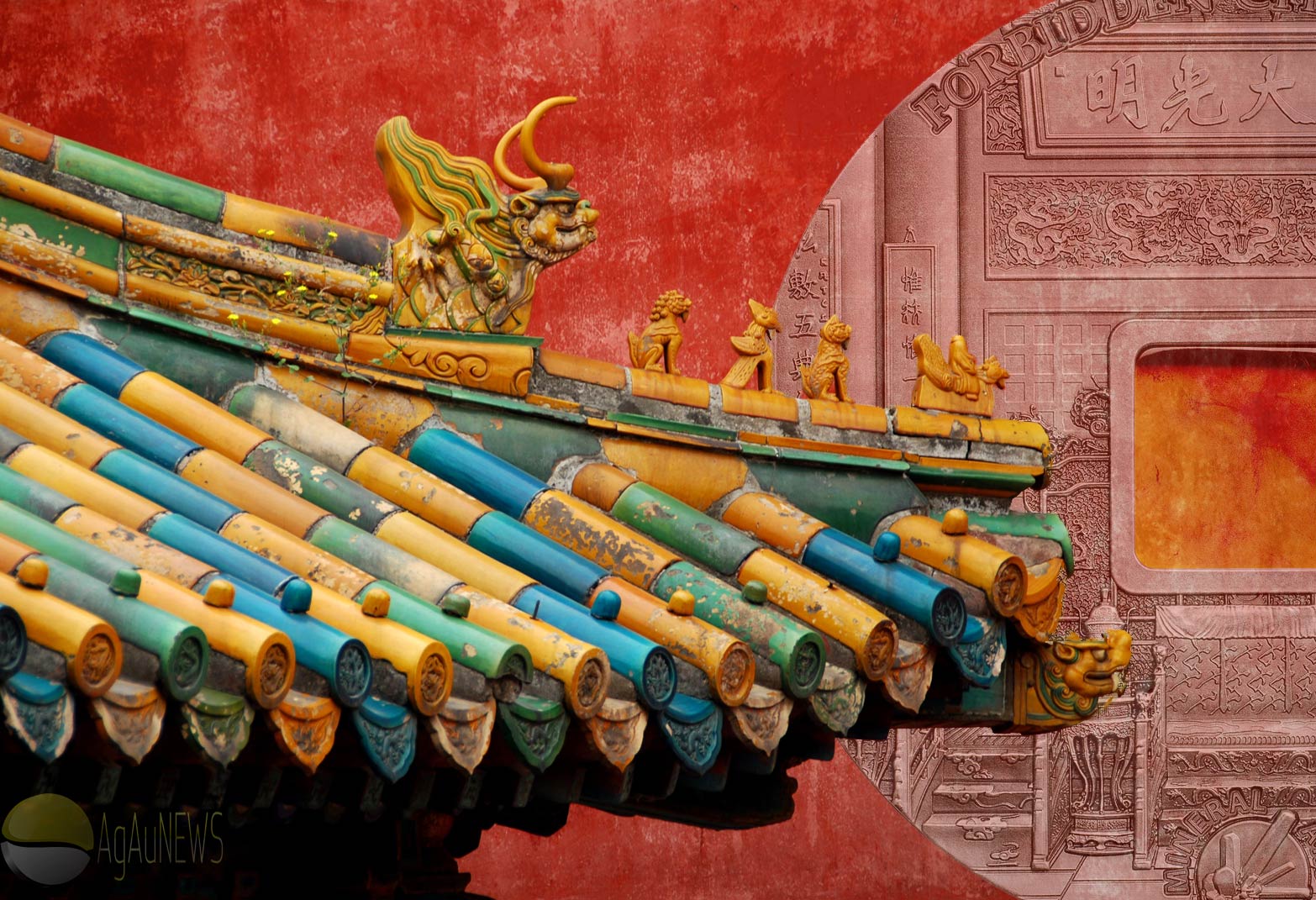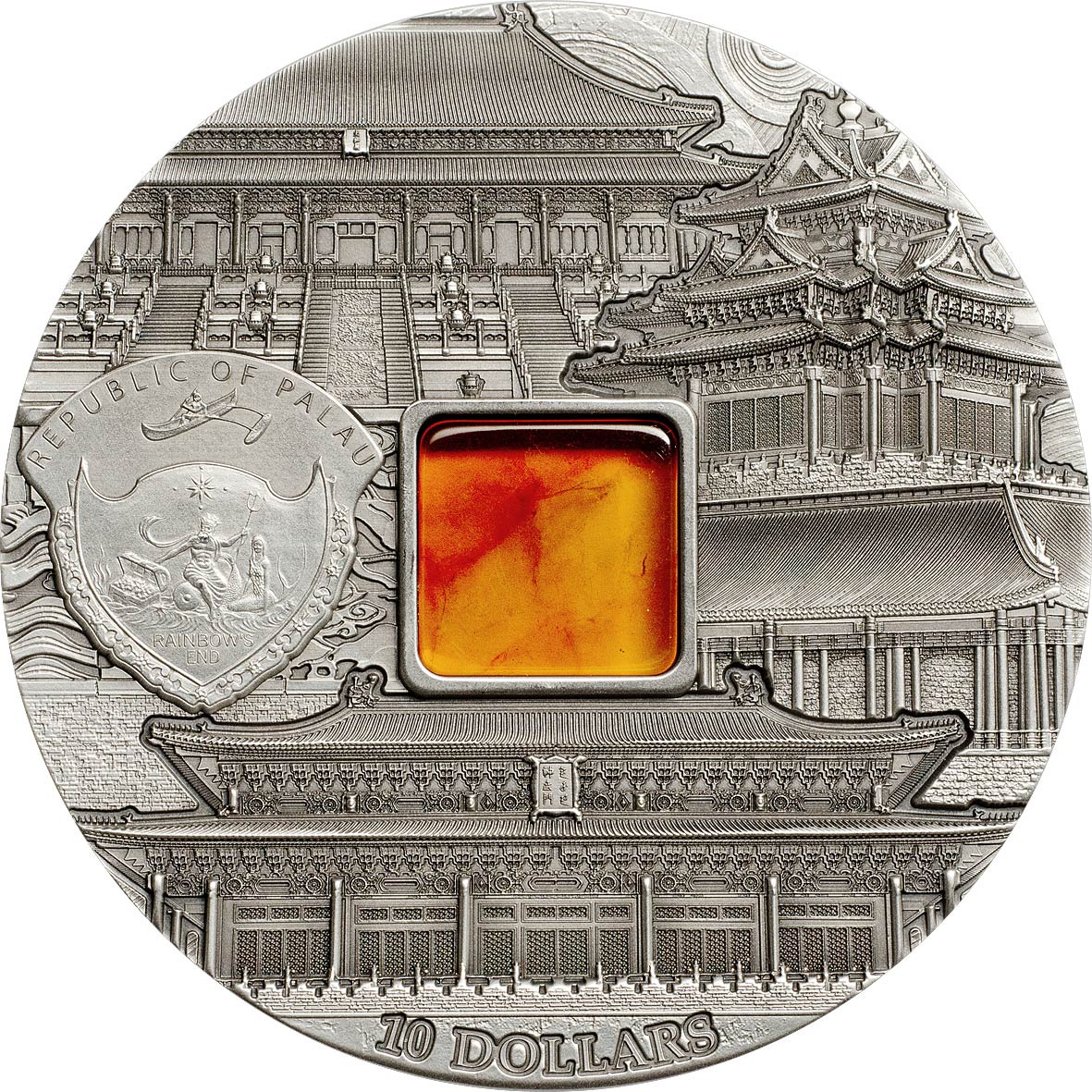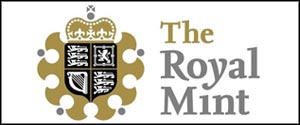In our view, art-architectural coins are some of the very finest that the numismatic colllector has to choose from. From the original Tiffany Art coin back in 2004 to the latest wide selection of coins released in numerous impressive series, the genre has grown and matured to a level of general excellence found almost nowhere else. One of the better series to be released over the last few years has been Mineral Arts which while always fine coins, really hit the mark with the Taj Mahal entrant in 2014, one of the finest coins released last year. The 2015 coin is the seventh in the series and features the Chines landmark, the Forbidden City.
Following a popular format for this type of coin, it weighs in a two ounces of antique-finish fine silver, is struck in high-relief, and has an inset window filled with a mineral, in this case amber. The design, as with the Taj Mahal, is highly detailed, excellently designed and beautifully struck. Not quite reaching the epic heights of the Taj Mahal perhaps, but still at the very top of the genre. The reverse side depicts a view of an interior from the Forbidden City, while the obverse features a mix of building exteriors from the eclectic mix that makes up this brilliant Chinese complex. The amber window shape and placement appears to be a nod to the shape of old Chinese coins that incorporated a square hole in the centre of a round coin; a nice touch.
The first two coins from 2009 and 2010 had mintages of 2,500 each, but since then the mintage has been reduced to a Tiffany matching 999. It’s great to see prices on these a little lower than was the norm for last years, with some dealers pricing it below €200 and none above €230. The coin should ship from the middle of October. Our thanks to Marcin at Polish-coins.com for help with the images.
The Forbidden City was the Chinese imperial palace from the Ming dynasty to the end of the Qing dynasty—the years 1420 to 1912. It is located in the centre of Beijing, China, and now houses the Palace Museum. It served as the home of emperors and their households as well as the ceremonial and political centre of Chinese government for almost 500 years.
Built in 1406 to 1420, the complex consists of 980 buildings and covers 72 ha (180 acres). The palace complex exemplifies traditional Chinese palatial architecture, and has influenced cultural and architectural developments in East Asia and elsewhere. The Forbidden City was declared a World Heritage Site in 1987, and is listed by UNESCO as the largest collection of preserved ancient wooden structures in the world.
When Hongwu Emperor’s son Zhu Di became the Yongle Emperor, he moved the capital from Nanjing to Beijing, and construction began in 1406 on what would become the Forbidden City.
Construction lasted 14 years and required more than a million workers. Material used include whole logs of precious Phoebe zhennan wood found in the jungles of south-western China, and large blocks of marble from quarries near Beijing. The floors of major halls were paved with “golden bricks”, specially baked paving bricks from Suzhou.
From 1420 to 1644, the Forbidden City was the seat of the Ming dynasty. In April 1644, it was captured by rebel forces led by Li Zicheng, who proclaimed himself emperor of the Shun dynasty. He soon fled before the combined armies of former Ming general Wu Sangui and Manchu forces, setting fire to parts of the Forbidden City in the process.
By October, the Manchus had achieved supremacy in northern China, and a ceremony was held at the Forbidden City to proclaim the young Shunzhi Emperor as ruler of all China under the Qing dynasty. The Qing rulers changed the names on some of the principal buildings, to emphasise “Harmony” rather than “Supremacy”, made the name plates bilingual (Chinese and Manchu), and introduced Shamanist elements to the palace.
In 1860, during the Second Opium War, Anglo-French forces took control of the Forbidden City and occupied it until the end of the war. In 1900 Empress Dowager Cixi fled from the Forbidden City during the Boxer Rebellion, leaving it to be occupied by forces of the treaty powers until the following year.
After being the home of 24 emperors – 14 of the Ming dynasty and 10 of the Qing dynasty – the Forbidden City ceased being the political centre of China in 1912 with the abdication of Puyi, the last Emperor of China.
Source: Wikipedia
ADVERTISEMENTS
SPECIFICATION
| DENOMINATION | COMPOSITION | WEIGHT | DIAMETER | FINISH | MINTAGE | BOX / COA |
|---|---|---|---|---|---|---|
| $10 PALAU | 0.999 SILVER | 62.2 g | 50.0 mm | ANTIQUE | 999 | YES / YES |









Agree totally this is a fraction lower than the wow factor of the Taj.
Just a fraction, mind. And maybe even unfairly so.
The exterior (obverse) side was always going to be muted given the low lying buildings that make up the complex.
The Taj had the exterior in spades, naturally.
And yet i have to say, the more i study the finer details of the Forbidden City exteriors the more it impresses, too.
Love the intelligent nod to old Chinese coins.
A perfect match for the amber. A smart change from doorways/windows (which would have been difficult here).
Wow, this is indeed an awesome design. I love it.
I’ll have to go back and check the previous design, but this one is really a stunner…BEAUTIFUL!